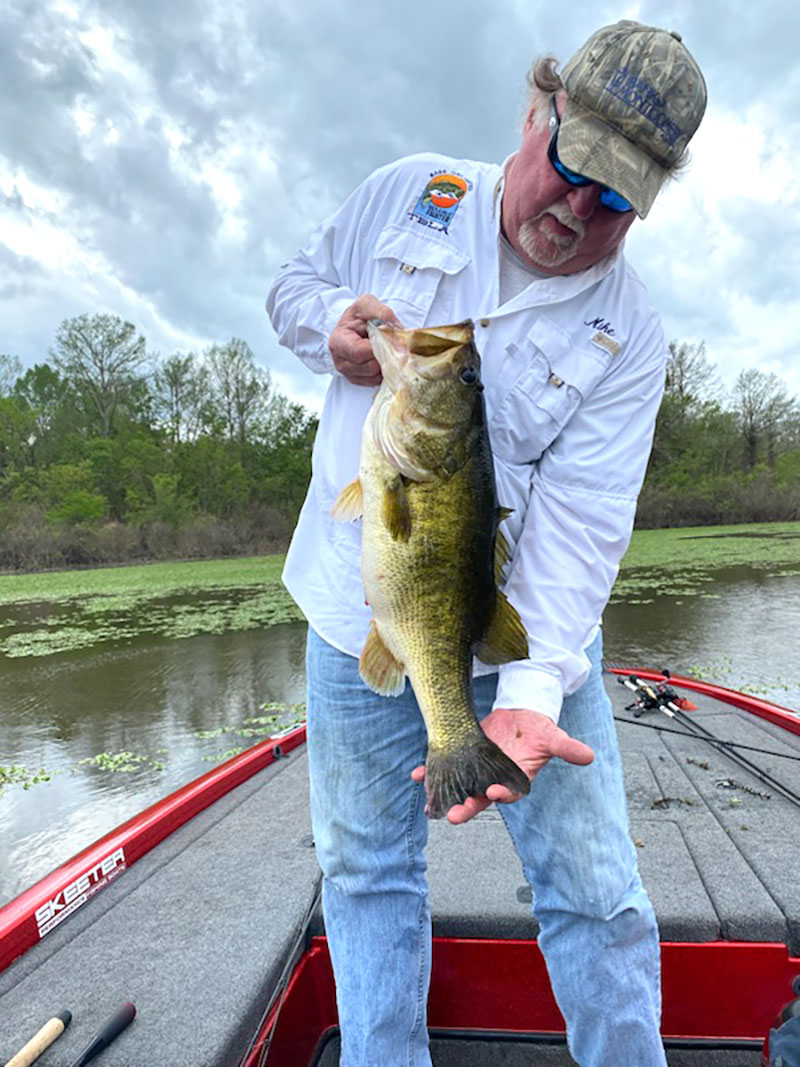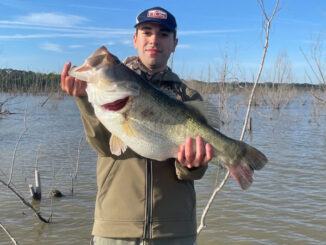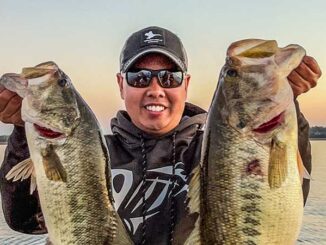
Soft plastics in the grass should be the ticket to bass
Toledo Bend’s reemergence of vegetation, mostly on the Texas side, puts quite a few critical pieces of the puzzle together for catching bass in the dog days of summer brought to us by July.
That grass, which includes increased hydrilla coverage and, lately, more and more peppergrass taking a foothold, will be a game-changer for the first time since the mid-2010s. That’s approximately how long it’s been since underwater vegetation has graced this border lake shared by Texas and Louisiana.
I feel strong about it. The green stuff may not be everywhere, but it’s getting back to the way it was, which really gets me looking forward to fishing this lake this summer. I’m counting on the seasonal bite to be like it was in the heyday of plunkin’ and dunkin’ soft plastics in the grass.
The good news is as the water gets warmer and warmer (it is just climbing out of the 70’s ) the grass will grow with each uptick of the water temperature. And, remember, the bream spawn usually lasts until at least the first week of July.
Hydrilla is growing now in 8- to 9-foot depths and will be deeper as the water drops in summer from over 171 feet, where it has been. Two generators are running and there’s no measurable precipitation in the forecast, so I assume the pool level will drop steadily heading into July.
Favorite tactic
I’d like to share a tactic that should help you put bass from the grass in the boat. I can’t wait to apply it again when I’m targeting bass in the grass with soft plastics — either Zoom Ol’ Monsters or Senkos on a 3/0 Gamakatzu EWG hook under a ½- to 5/8- to ¾-ounce weight to get them down there where they’re at (85 percent of the time they’re on the bottom).
Concentrate on the breaks, the scattered clumps of grass most of the time in deeper water just outside the hard lines of underwater vegetation. Don’t pass that stuff up, no matter how small. It’ll give up bass more often than not on the way to the heavily matted grass line.
My favorite colors are the most consistent producers in the summer at Toledo Bend. At the top is Redbug, but right there with it are plum, plum/apple and another favorite, Junebug/red.
About that peppergrass. It was a sight for sore eyes when I saw it on a few late spring trips on the lake. It grows pretty much in 5- to 7-foot depths, which is extra shallow water cover that’s also used for bream, shad and crawfish — yummies for bass.
Pads are back
Besides peppergrass, another plant making a welcome appearance following a long absence is lily pads. They aren’t as prolific as several years ago, but they’re coming back, also.
Toledo Bend’s bass move out via drains and ditches to creek channels this time of year.
Having the grass there for bass to move into is a big plus because they’ll often bite the first two hours and the last few hours, sometimes all day, and the bassin’ bite at night gets better and better.
There are many variables involved. I’d start the day around sunrise with topwaters, including buzz baits and plastic frogs in and around the grass. Swim baits and bladed jigs also are effective.
Heck, schooling bass action might even become a thing again with more grass in the pond. It’s been spotty, if at all, the past several summers but some of that bite will be welcome. Enjoy your time on Toledo Bend. Boat safe and smart. The lake will be crowded.
I’ve been guiding on this lake most of my life. Give me a call at (936) 404-2688.


